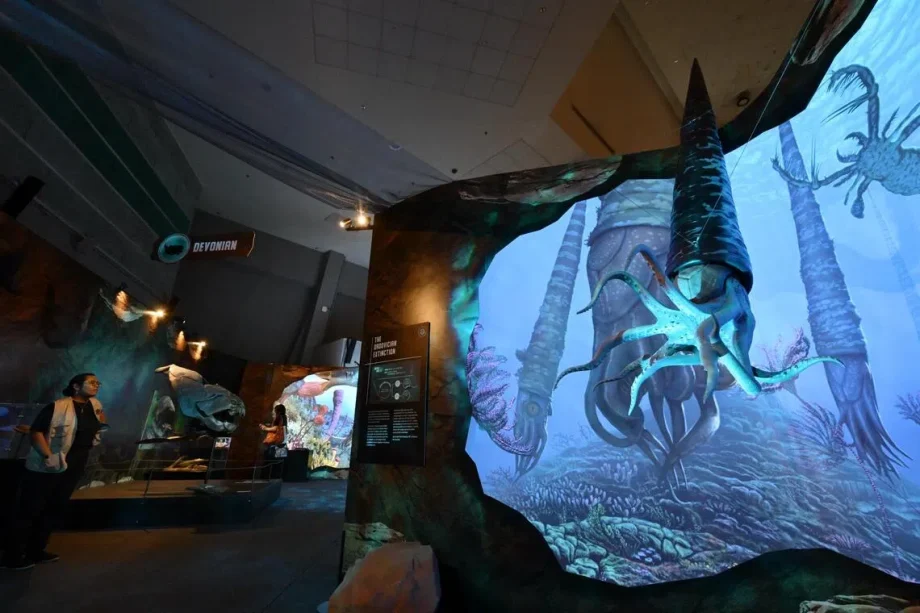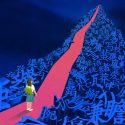SINGAPORE – From Oct 11, visitors stepping into a hall at the Science Centre Singapore will be transported more than 400 million years into the past, when prehistoric creatures still roamed the planet.
Greeting guests at the entrance to the centre’s latest exhibition, Dinosaurs | Extinctions | Us, is a full-scale model of one of the top predators of the Ordovician period – the Endoceras, a shelled cephalopod similar to a modern squid, that can grow up to 5.7m.
That exhibit is bathed in a shimmering ocean-blue light in a reference to how the area north of the tropics was almost entirely ocean during that period, which began more than 480 million years ago.
The Ordovician period is the first of six geological eras that visitors of the exhibition will be able to explore.
The exhibition will also take them on a journey through the late Devonian, Permian, Triassic and Cretaceous eras, and finally the Holocene epoch.
The Holocene epoch provides visitors with a glimpse of how animals have been driven to extinction by the arrival of humans, but also serves as a reminder that people have the power to protect and safeguard the earth’s remaining biodiversity.
Even though the exhibit spans just 3,000 sq m – less than half the size of a typical football field – it will be the centre’s largest-ever dinosaur showcase.

Even though the exhibit spans just 3,000 sq m – less than half the size of a typical football field – it will be the centre’s largest-ever dinosaur showcase.
ST PHOTO: NG SOR LUAN
Visitors will learn about prehistoric life and the five major mass extinction events through interactive activities and 90 captivating artefacts, including 33 rare fossils and 60 full-scale models.
As visitors wander from one period to another, they will learn about different triggers of mass extinction, such as massive volcanic activity and rapid changes in global temperature.
Modern climate change, caused by ever-increasing amounts of greenhouse gases in the atmosphere due to the burning of fossil fuels, is believed by some scientists to be causing the planet’s sixth mass extinction event.
Jointly organised by Science Centre Singapore and the NUS Lee Kong Chian Natural History Museum, the exhibition brings together the Dinosaurs of Patagonia exhibition curated by Museo Paleontologico Egidio Feruglio and the Six Extinctions exhibition by Gondwana Studios.
The exhibition starts on Oct 11. Its end date has not yet been announced.

A robotic Ankylosaur greeting visitors during a media preview of Dinosaurs | Extinctions | Us.
ST PHOTO: NG SOR LUAN
Ms Tham Mun See, chief executive of the Science Centre Board, said during a media preview of the exhibition on Oct 9 that it is far more than a showcase of prehistoric life.
“It is a powerful narrative about survival, a call to examine the earth’s deep history and consider our role in shaping what comes next. Through stunning fossils and immersive experiences, we strive to kindle fascination and encourage decisive action in response to our modern biodiversity emergency,” she said.
For example, specimens from the Lee Kong Chian Natural History Museum will offer guests a more “updated” perspective on extinctions by highlighting the threats faced by wildlife due to human activity. These include risks faced by wild animals due to deforestation, hunting and introduced species.
The exhibits feature animals that are all extirpated, or locally extinct. One example is the cream-coloured giant squirrel. They were thought to still be around in Singapore in the 1980s and 1990s.

A taxidermy cream-coloured giant squirrel at the Science Centre’s upcoming exhibition, Dinosaurs | Extinctions | Us.










